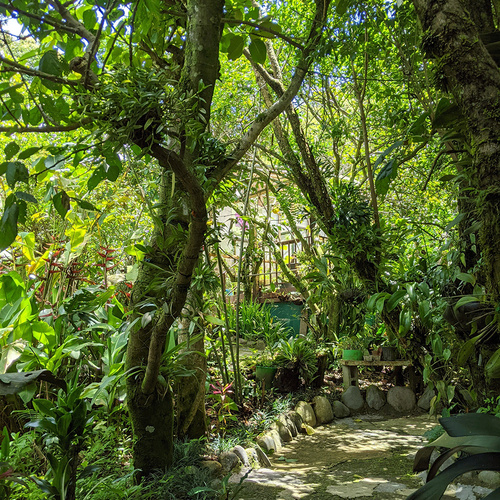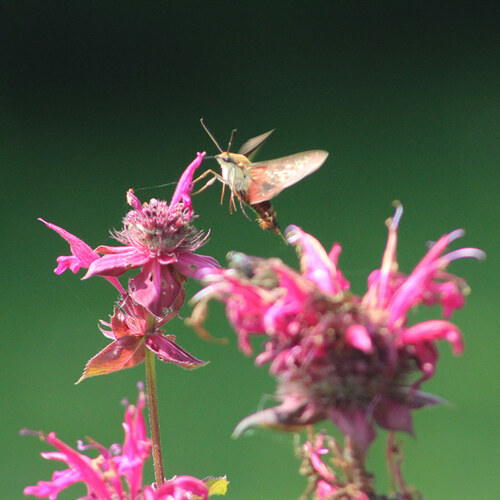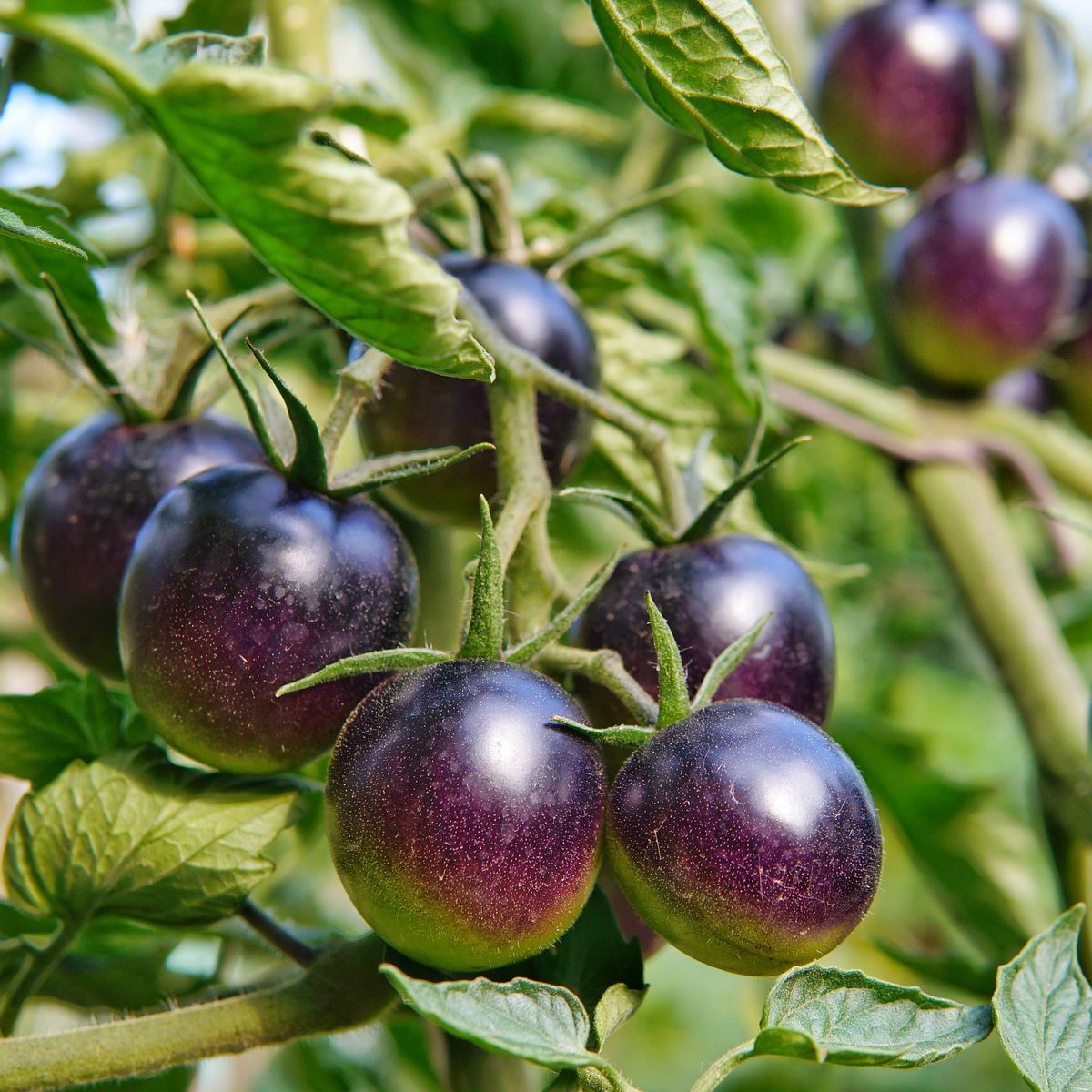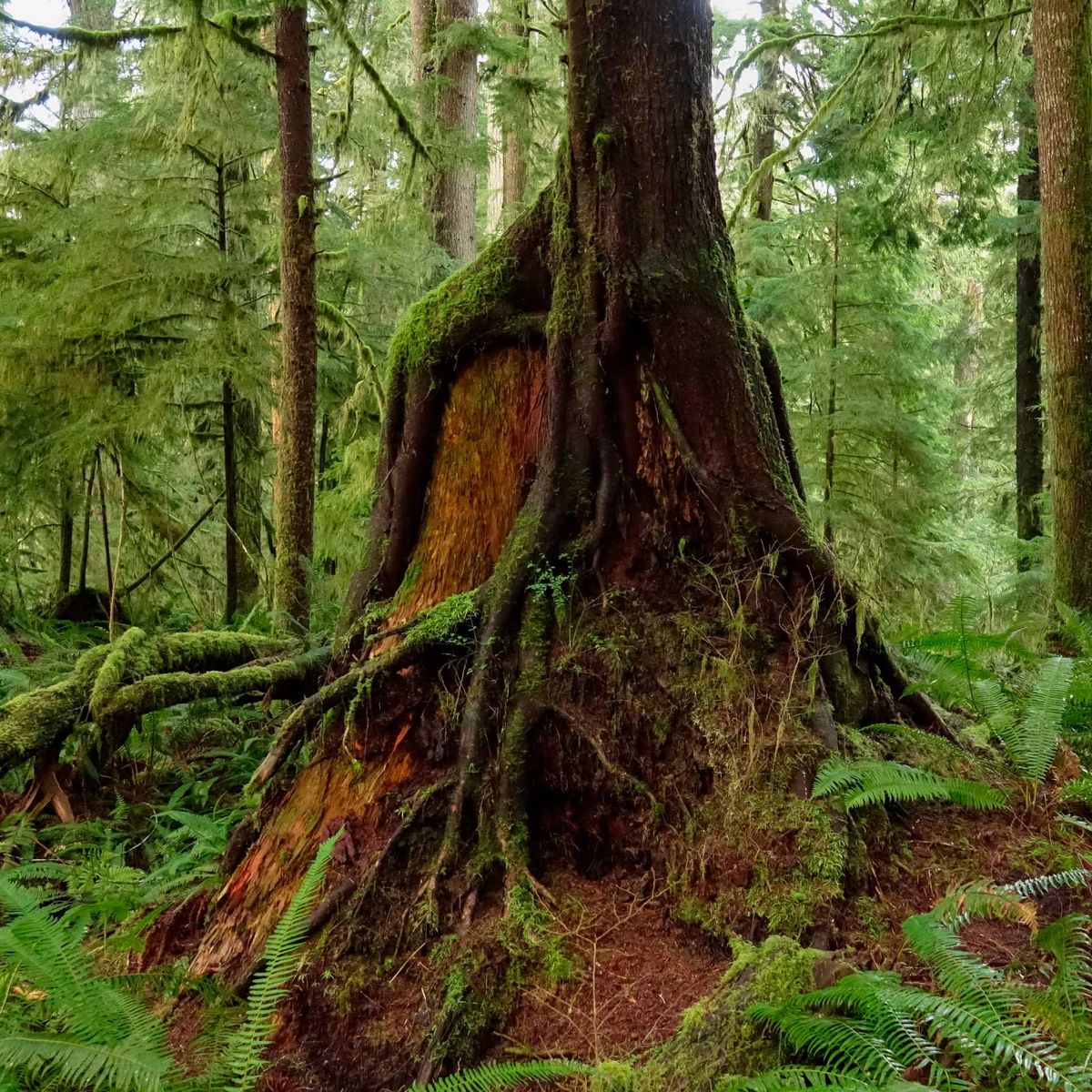Happy Friday and Valentine’s Day GPODers!
In case you missed it last week, I shared another fabulous guest post from Fine Gardening’s digital editor, Christine Alexander. She had finally gotten around to gathering photos from a trip she took to Costa Rica in August of 2021. With absolutely no intention on my behalf, the second installment of her trip to the fabulous Monteverde Orchid Garden aligned with Valentine’s Day.
No, I’m not insinuating that orchids are the best gift to give a loved one—most of us probably know that kind of gift comes with a whole lot of work and varying rates of success. However, this destination was so beautiful and the trip altogether so special, that Christine and her (now) husband decided to elope while they were there. For Christine’s full version of that story, and the first batch of photos she shared, check out Part 1, here. And read the paragraphs below for a refresher on the incredibly unique Monteverde Orchid Garden.
I have probably 500 photos I could share of the beauty of that country but I decided to send you something kind of cool that we accidentally ran into which is the Monteverde Orchid Garden. Despite working at Fine Gardening for 7 years, I have to admit I didn’t know much about orchids and was astounded to learn some of the specifics that make them special – for instance, many orchids have exclusive relationships with a specific pollinator, that they have developed incredible ways to lure insects into their flowers for pollination such as mimicking the scent of pheromones of the opposite sex or even the smell of rotting flesh all in an effort to attract insects to pollinate them. Other orchids are noted for their highly floral or sweet scent and are often used in perfumery as a result. The cooking ingredient vanilla actually comes from an orchid, the Vanilla planifolia. (You can learn how to grow your own vanilla orchid here).
The Monteverde Orchid garden has over 450 varieties or orchids, including the smallest orchids in the world – which we needed a magnifying glass to view. It is a small garden, but packed full of flowers and information. Highly recommend checking it out if you are an orchidist or have orchidelirium, (the history of which is fascinating!)
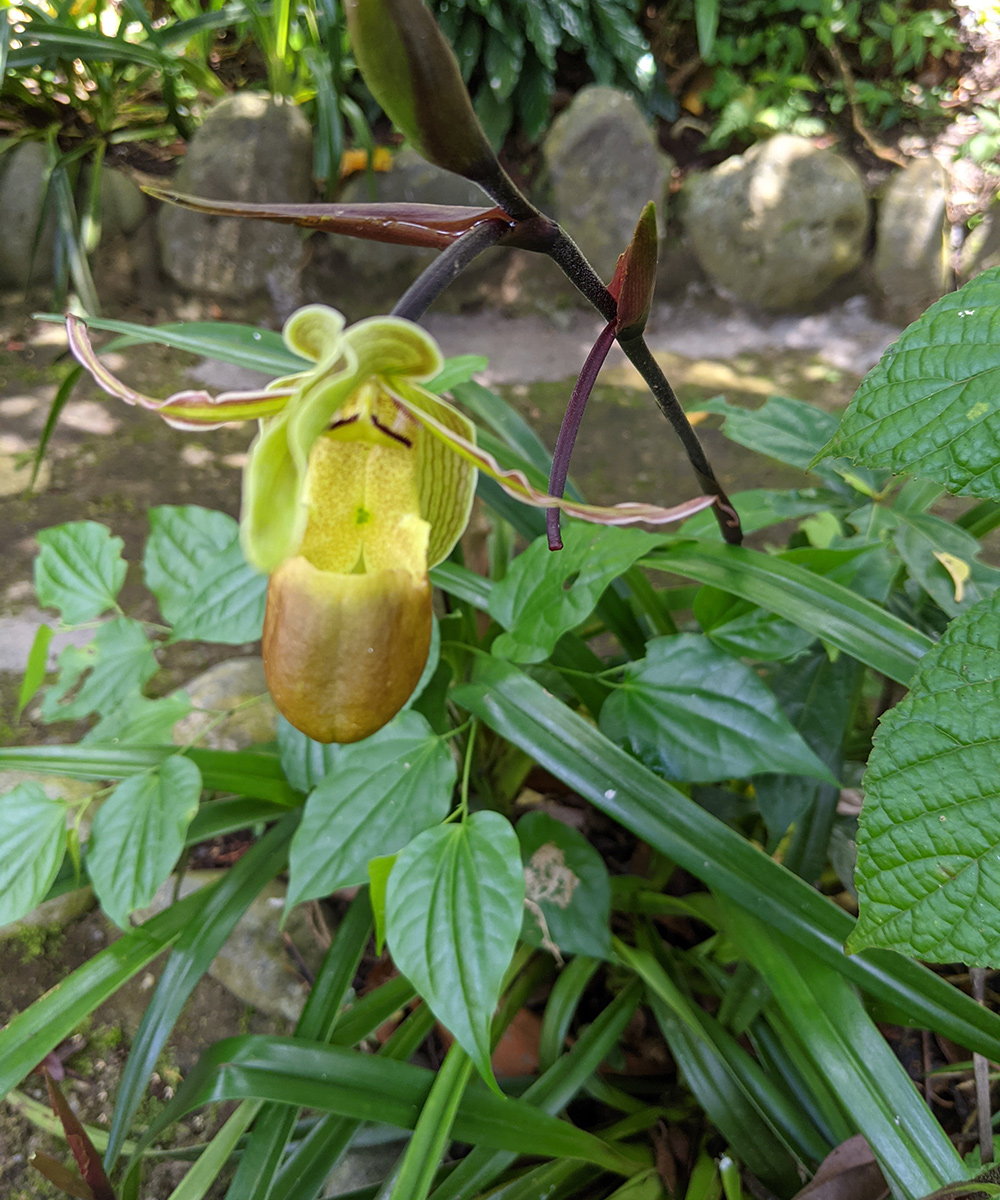 Today’s batch of photos is a mixture of the orchids the garden is famous for as well as other tropical plants that can be seen there. Of course, we have to start off with another outstanding orchid. The long-leaf phragmipedium (Phragmipedium longifolium) above is a slipper orchid, with its characteristic slipper-shaped pouch that traps insects inside to ensure pollination.
Today’s batch of photos is a mixture of the orchids the garden is famous for as well as other tropical plants that can be seen there. Of course, we have to start off with another outstanding orchid. The long-leaf phragmipedium (Phragmipedium longifolium) above is a slipper orchid, with its characteristic slipper-shaped pouch that traps insects inside to ensure pollination.
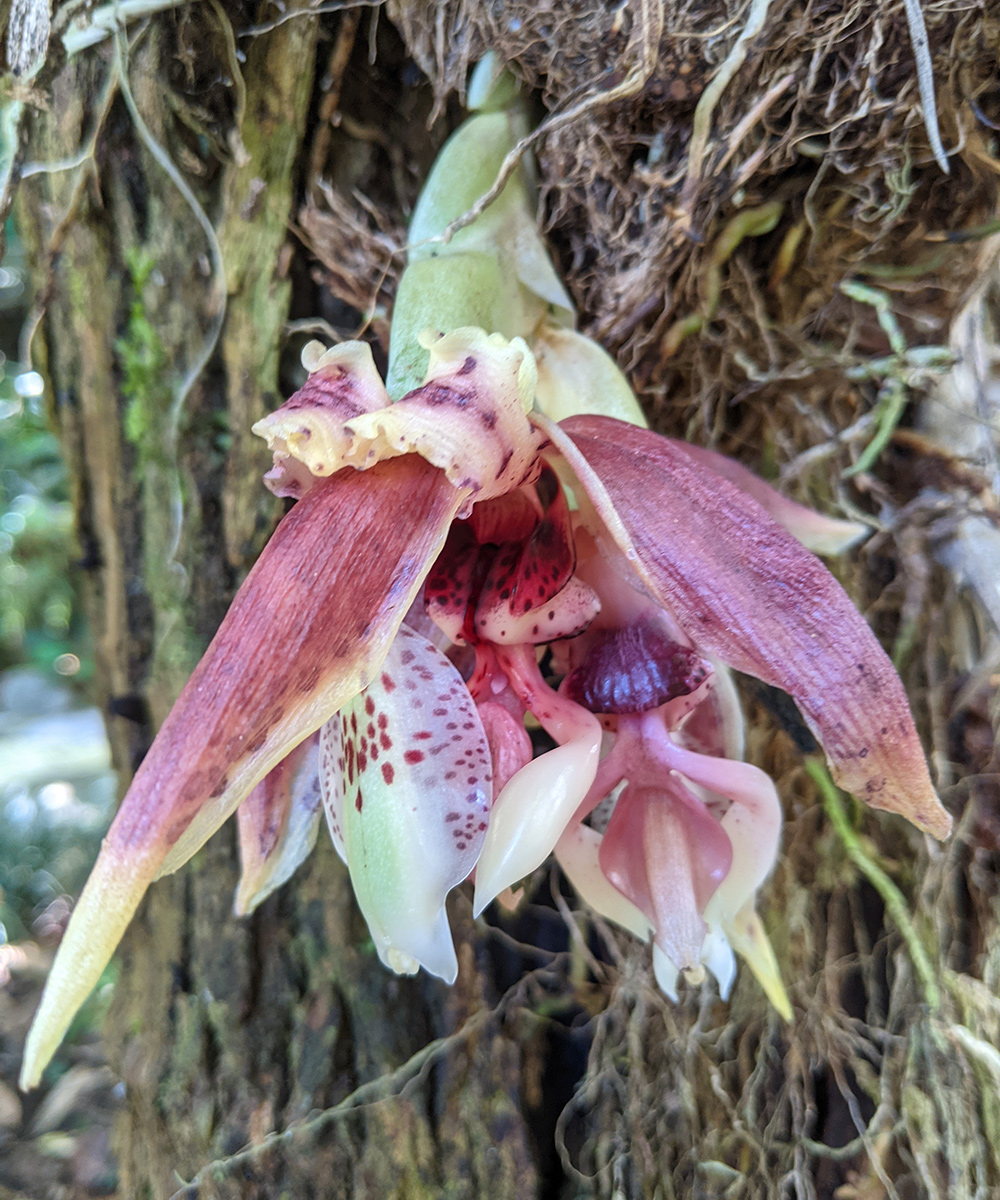 Next up is an orchid that I believe is closely related to one of the orchids we saw in Part 1. That orchid was a Stanhopea wardii, which also has those oddly shaped petals that are said to mimic the shape and pheromones of a female euglossine bee to attract male bees to pollinate. This specimen has fascinating coloring that I couldn’t pin down in the Stanhopea genus.
Next up is an orchid that I believe is closely related to one of the orchids we saw in Part 1. That orchid was a Stanhopea wardii, which also has those oddly shaped petals that are said to mimic the shape and pheromones of a female euglossine bee to attract male bees to pollinate. This specimen has fascinating coloring that I couldn’t pin down in the Stanhopea genus.
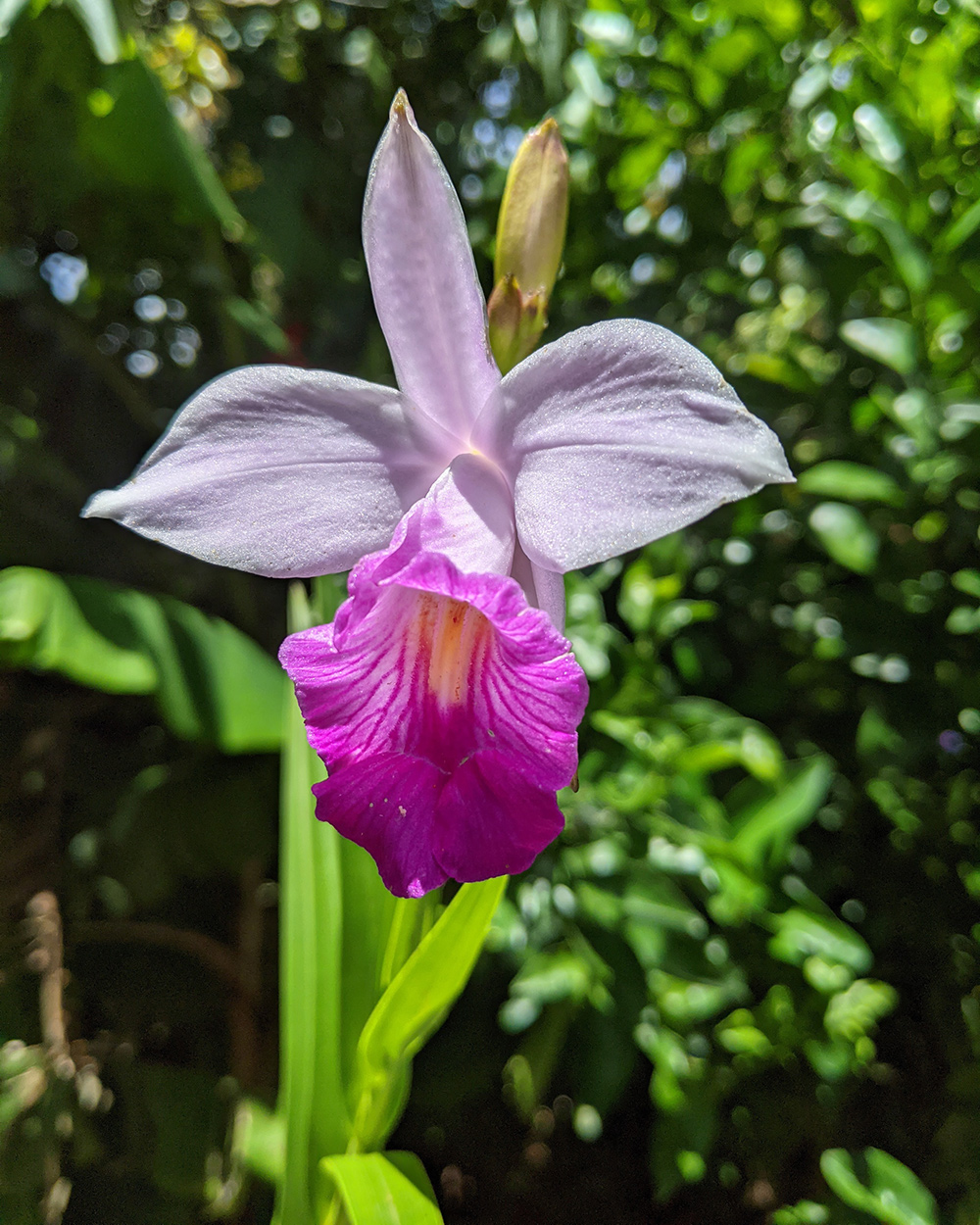 This orchid got the memo that’s it’s Valentine’s Day! Bamboo orchid (Arundina graminifolia) gets its name from its bamboo-like foliage, but can also be compared to bamboo for its incredible height—growing up to 6 feet high. Definitely worth getting onto the tips of your toes to see these pretty blooms.
This orchid got the memo that’s it’s Valentine’s Day! Bamboo orchid (Arundina graminifolia) gets its name from its bamboo-like foliage, but can also be compared to bamboo for its incredible height—growing up to 6 feet high. Definitely worth getting onto the tips of your toes to see these pretty blooms.
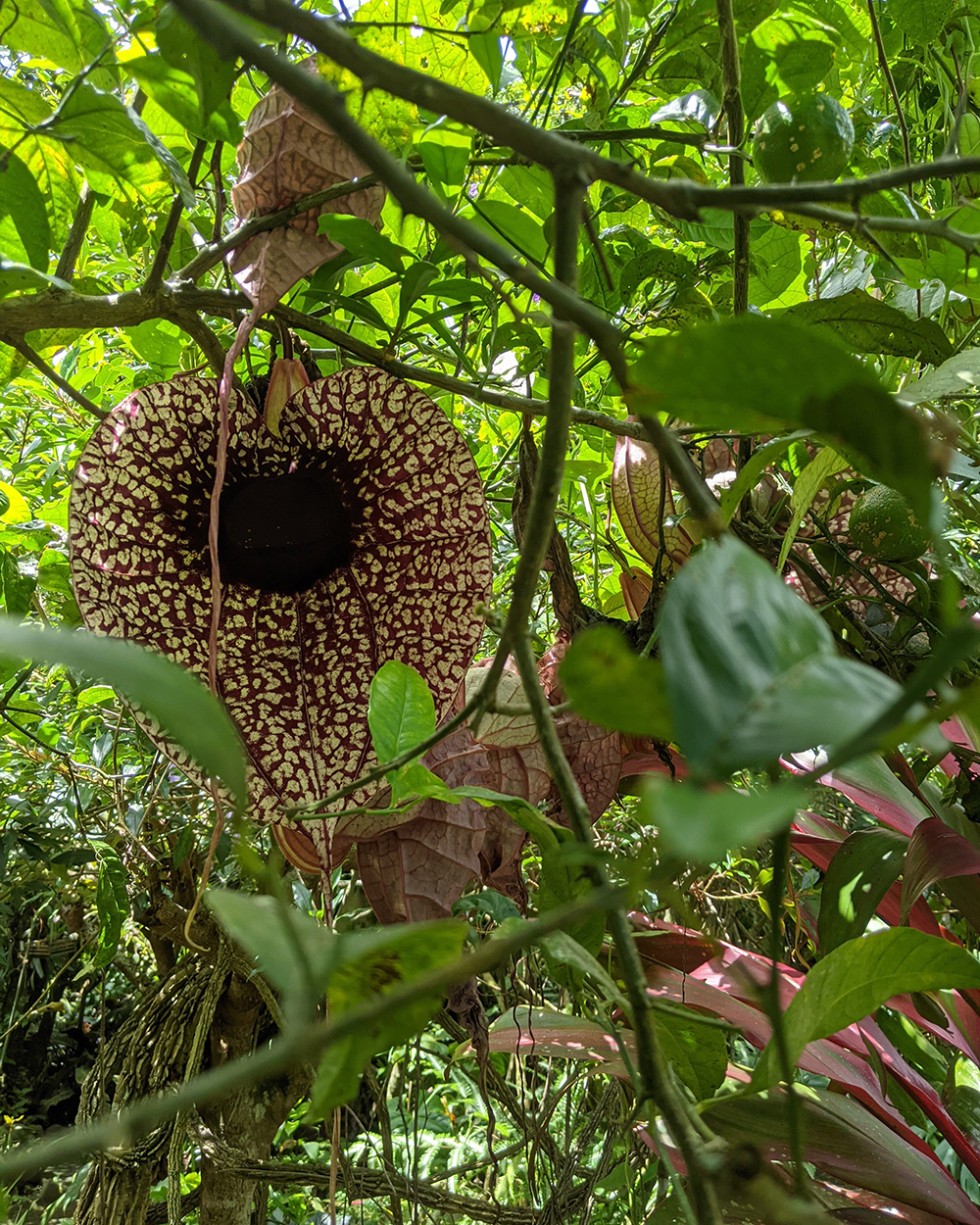 Of course, sometimes beauty is in the eye (and nose) of the beholder. Pelican flowers (Aristolochia grandiflora) are pretty infamous for being one of the world’s largest flowers, and for its foul odor that attracts the flies that pollinate it. However, the smell of rotting meat apparently doesn’t bother butterflies so much, as the plant has been introduced in Florida where they attract and support butterflies.
Of course, sometimes beauty is in the eye (and nose) of the beholder. Pelican flowers (Aristolochia grandiflora) are pretty infamous for being one of the world’s largest flowers, and for its foul odor that attracts the flies that pollinate it. However, the smell of rotting meat apparently doesn’t bother butterflies so much, as the plant has been introduced in Florida where they attract and support butterflies.
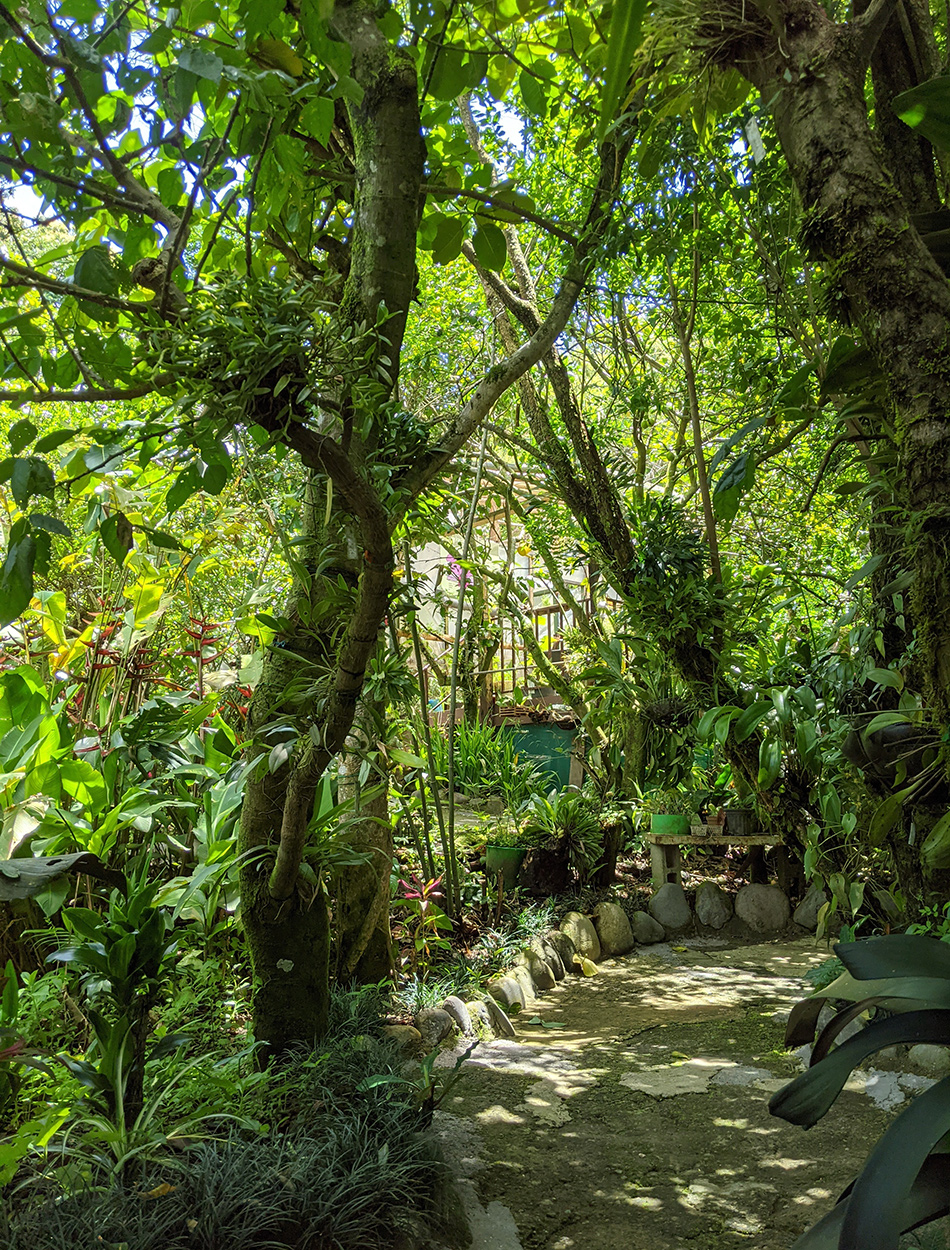 As Christine mentions in the description at the top of this post, Monteverde Orchid Garden really makes the most of every inch available for plants. A winding path allows you to weave through the dense plantings and admire everything from low-growers to the vines and air plants that cling to the tree branches and trunks.
As Christine mentions in the description at the top of this post, Monteverde Orchid Garden really makes the most of every inch available for plants. A winding path allows you to weave through the dense plantings and admire everything from low-growers to the vines and air plants that cling to the tree branches and trunks.
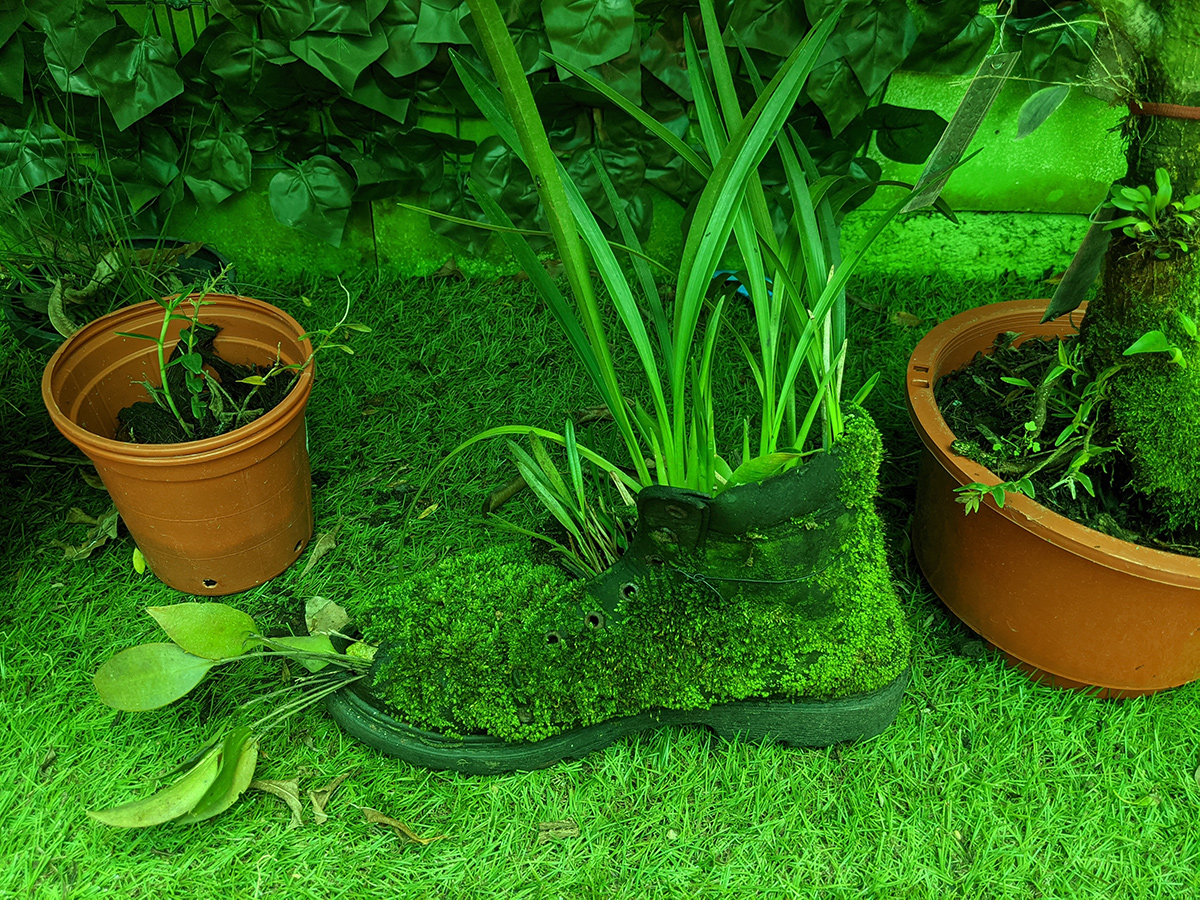 While many conventional containers can be seen scattered throughout the garden, some unconventional materials are also used. Potting up plants in an old boot is certainly nothing new, but I absolutely love that moss has begun to cover the entirety of the boot.
While many conventional containers can be seen scattered throughout the garden, some unconventional materials are also used. Potting up plants in an old boot is certainly nothing new, but I absolutely love that moss has begun to cover the entirety of the boot.
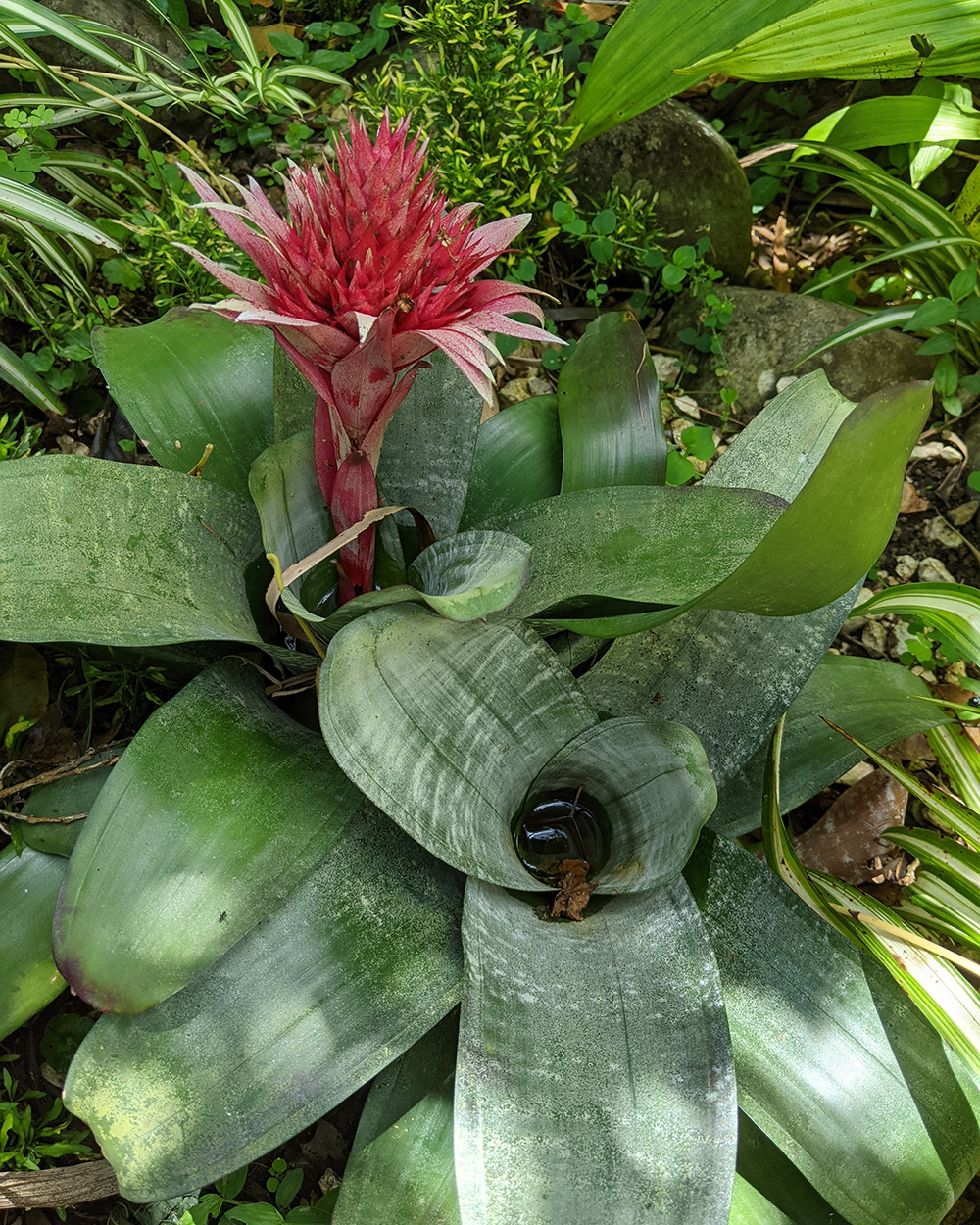 Another large family of plants in the tropics are the bromeliads. While maybe not quite as diverse as the showy orchid family (Orchidaceae), bromeliads (Bromeliaceae) do have some very interesting growing habits and spectacular inflorescences. Also called the “pineapple family” the commercial pineapple (Ananas comosus) is a bromeliad as well as air plants like Spanish moss (Tillandsia usneoides, Zones 8–11). The urn plant (Aechmea fasciata, Zones 10–11) above shows another common characteristic of bromeliads, the reservoir created at the base of their leaves that holds water.
Another large family of plants in the tropics are the bromeliads. While maybe not quite as diverse as the showy orchid family (Orchidaceae), bromeliads (Bromeliaceae) do have some very interesting growing habits and spectacular inflorescences. Also called the “pineapple family” the commercial pineapple (Ananas comosus) is a bromeliad as well as air plants like Spanish moss (Tillandsia usneoides, Zones 8–11). The urn plant (Aechmea fasciata, Zones 10–11) above shows another common characteristic of bromeliads, the reservoir created at the base of their leaves that holds water.
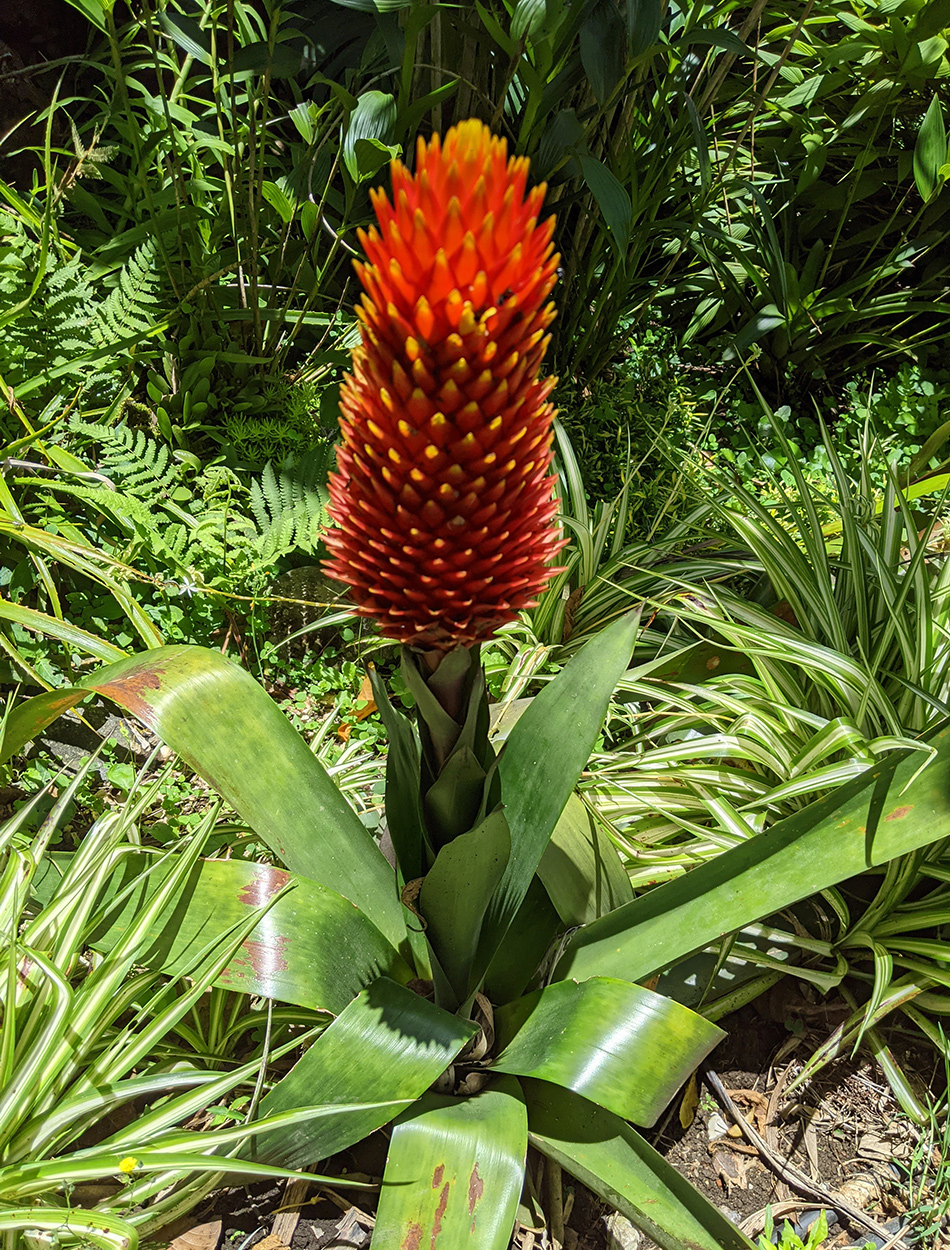 Another bromeliad that might remind you of it’s relative the pineapple, cone-headed guzmania (Guzmania conifera, Zones 10–11). However, the dazzling part of this plant is not a fruit but another example of bromeliad’s incredible inflorescences. The yellow-tipped, bright red scales are floral bracts and keep the interest going as the flowers that emerge from these bracts are short lived.
Another bromeliad that might remind you of it’s relative the pineapple, cone-headed guzmania (Guzmania conifera, Zones 10–11). However, the dazzling part of this plant is not a fruit but another example of bromeliad’s incredible inflorescences. The yellow-tipped, bright red scales are floral bracts and keep the interest going as the flowers that emerge from these bracts are short lived.
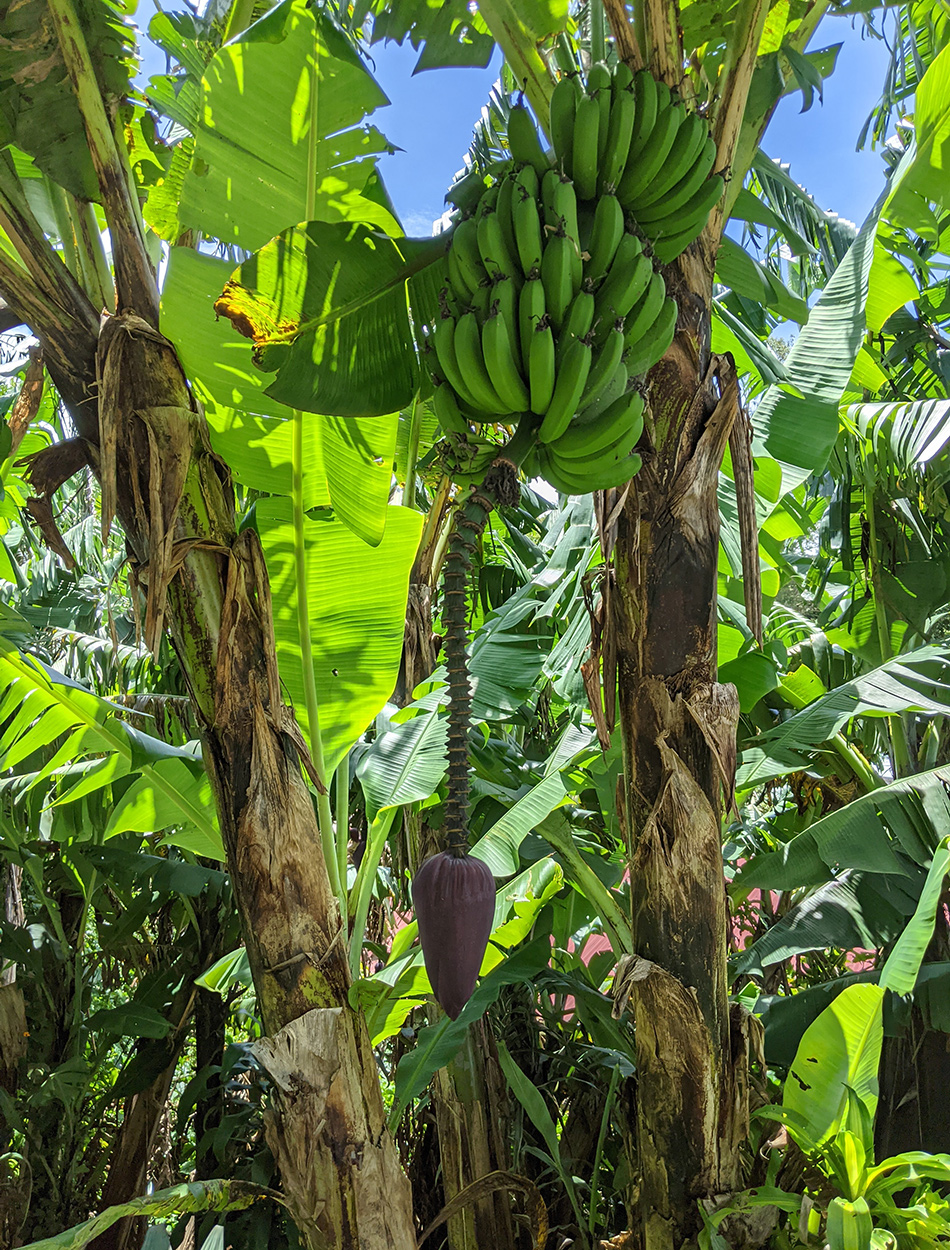 Is a tropical forest garden complete without some banana trees? While we’re most familiar with the bright yellow fruits full of potassium, the banana tree also produces these huge banana blossoms (the large purple bud trailing off the bunch of fruit) that is also completely edible. A popular ingredient in Southeast Asian cuisines, the flavor is mild and often compared to the taste of artichokes.
Is a tropical forest garden complete without some banana trees? While we’re most familiar with the bright yellow fruits full of potassium, the banana tree also produces these huge banana blossoms (the large purple bud trailing off the bunch of fruit) that is also completely edible. A popular ingredient in Southeast Asian cuisines, the flavor is mild and often compared to the taste of artichokes.
I hope that you enjoyed a taste of the tropics on this Valentine’s Day. While the holiday is often associated with romantic relationships, it’s important to show our love and appreciation for everyone and everything we hold dear. Hello! Our plants wouldn’t mind a little extra love on this holiday, too! I’ll be showing my houseplants some much-needed love this weekend, and I’m sending my love and appreciation to everyone in the GPOD community. Have a lovely day and a great weekend!
Have a garden you’d like to share?
Have photos to share? We’d love to see your garden, a particular collection of plants you love, or a wonderful garden you had the chance to visit!
To submit, send 5-10 photos to [email protected] along with some information about the plants in the pictures and where you took the photos. We’d love to hear where you are located, how long you’ve been gardening, successes you are proud of, failures you learned from, hopes for the future, favorite plants, or funny stories from your garden.
Have a mobile phone? Tag your photos on Facebook, Instagram or Twitter with #FineGardening!
Do you receive the GPOD by email yet? Sign up here.
Fine Gardening Recommended Products

The New Organic Grower, 3rd Edition: A Master’s Manual of Tools and Techniques for the Home and Market Gardener, 30th Anniversary Edition
Fine Gardening receives a commission for items purchased through links on this site, including Amazon Associates and other affiliate advertising programs.
Since its original publication in 1989, The New Organic Grower has been one of the most important farming books available, with pioneer Eliot Coleman leading the charge in the organic movement in the United States. Now fully illustrated and updated, this 30th Anniversary Edition is a must-have for any agricultural library.
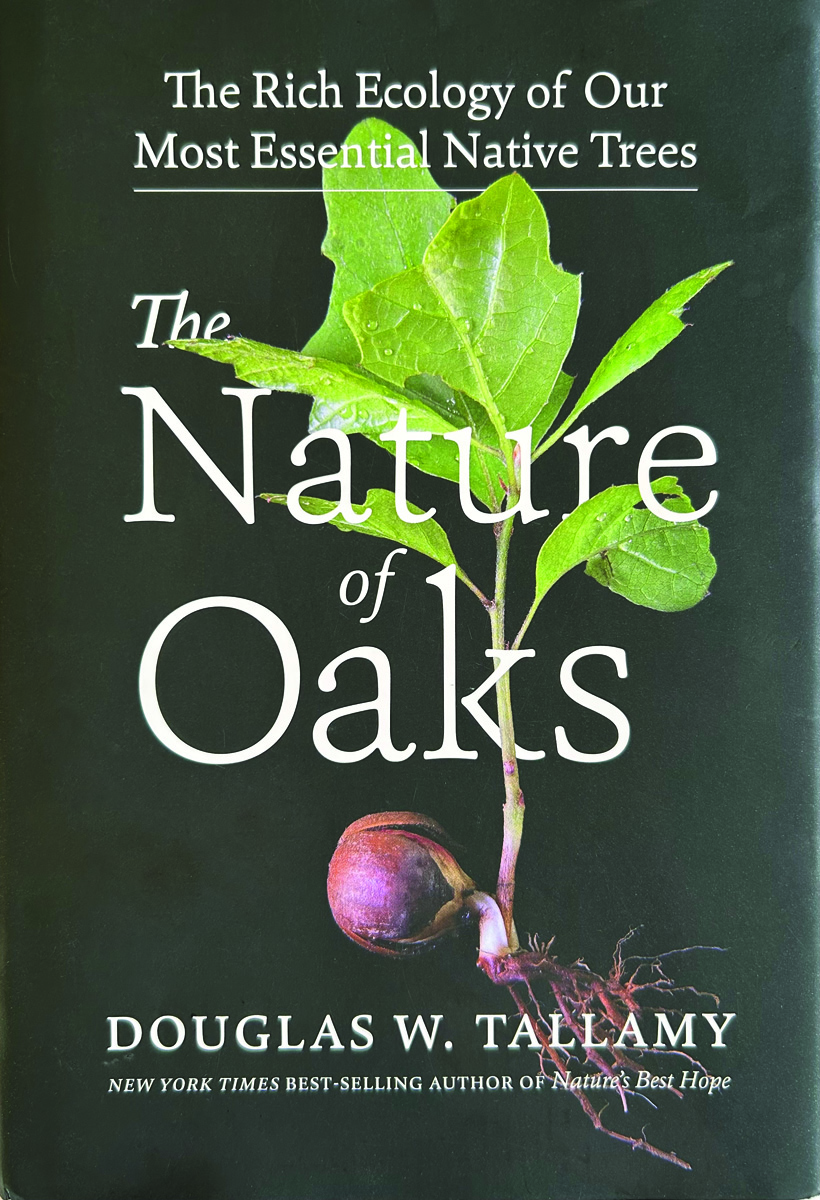
The Nature of Oaks: The Rich Ecology of Our Most Essential Native Trees
Fine Gardening receives a commission for items purchased through links on this site, including Amazon Associates and other affiliate advertising programs.
The Nature of Oaks reveals what is going on in oak trees month by month, highlighting the seasonal cycles of life, death, and renewal. From woodpeckers who collect and store hundreds of acorns for sustenance to the beauty of jewel caterpillars, Doug Tallamy illuminates and celebrates the wonders that occur right in our own backyards. He also shares practical advice about how to plant and care for an oak, along with information about the best oak species for your area.

The Regenerative Landscaper: Design and Build Landscapes That Repair the Environment
Fine Gardening receives a commission for items purchased through links on this site, including Amazon Associates and other affiliate advertising programs.
2024 Nautilus Award Gold Medal Winner! This awe-inspiring guide weaves together permaculture design, food resiliency, climate adaptation, community organizing, and indigenous wisdom that you can implement in your own backyard.

